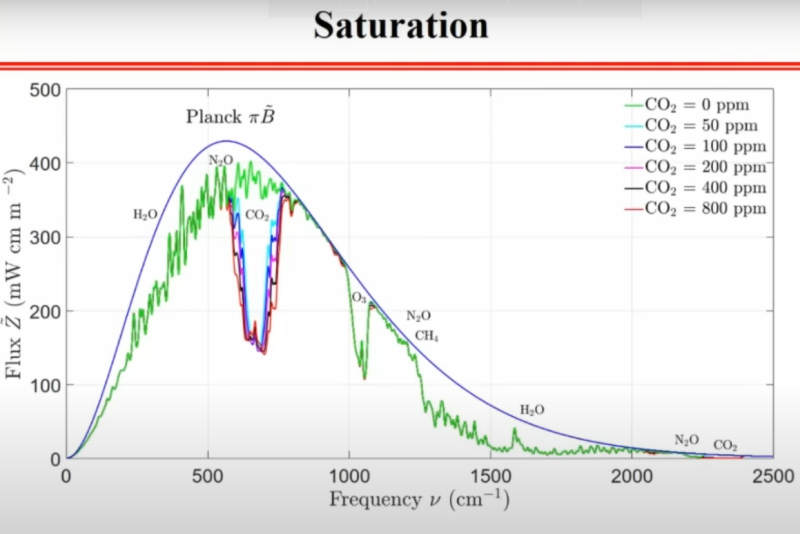CO2 saturation

12/29/2022 11:35 - Posted by Tom van Leeuwen
This graph is all you need to understand that CO
2 is
not the Earth's Climate Control Knob.
On the horizontal axis, we see the Infra-red (IR) spectrum wavelengths, that is like "IR colors" were this kind of radiation visible to the human eye.
The vertical axis shows to energy flux, that is the energy emitted by the Earth, as seen from outer space.
The graph itself shows how the Earth's atmosphere filters the IR radiation emitted by the Earth's surface and the role of the various greenhouse gases in that filtering process. The green line is the filter of the Earth's atmosphere without any greenhouse gases.
CO
2 absorbs IR-radiation in a narrow band around wavelength 15 nm, that is around the frequency number 650.
The light blue line is the filtering that occurs when 50 ppm CO
2 is added to the atmosphere. That is 1/8 of the current CO
2-concentration. The difference of adding that first 50 ppm is clearly visible.
Then we add another 50 ppm and get the dark blue line.
There is hardly any difference. Adding more and more CO
2, up to 800 ppm in this example, has hardly any effect for the IR-filtering (apsobtion).
That's the CO
2-greenhouse effect saturation in action. The saturation point lies between 50 and 100 ppm. That when the CO
2-greenhouse effect is in play. Adding more and more CO
2 has virtually no effect for the energy flux and thus, the temperature.
This graph has been measured and drawn by William Happer and William van Wijngaarden.
Please refer to this video for a full explanation.
